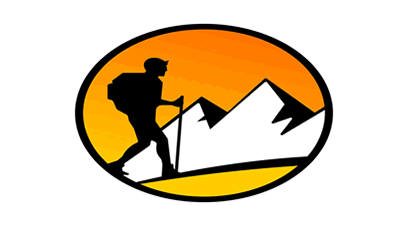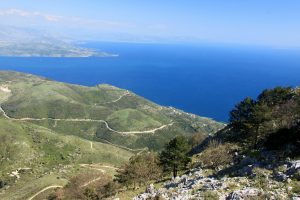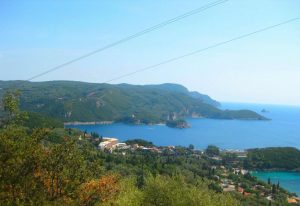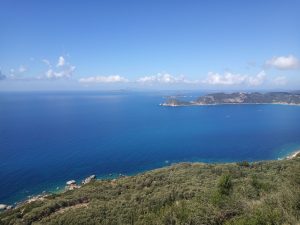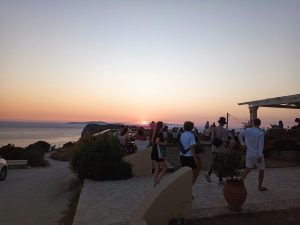About
Corfu ( Kerkyra ) is an irregular shaped island in the Ionian sea, it is approximately 53km. long 24km. wide in the north and 4km near its southern end. It has a total area of 592 square kilometres and a coastline of 217 kilometres. Compared to mainland Greece the Island is blessed with mild winters and relatively cool summers. The annual rainfall varies, the majority of this in the winter months. Snow and frost are rarities on the island even though the Albanian and Greek mountains a few miles away have a covering of snow for most of the winter. As a result of this, humidity is high which gives rise to lush vegetation, which in turn harbours a great variety of wildlife. The terrain is varied with at least six peaks over 500meters the highest being Mount Pandokrator at 906 meters. On the higher slopes there is maquis, the typical Mediterranean landscape i.e. rocky with low scrub and grass etc. There is rich pasture/tillable land like the Ropa Valley which includes a golf course, coastal plains with salt water lagoons some of which contain disused salt pans, the remainder of the Island comprises undulating hills carpeted in endless olive groves with a scattering of family owned and cultivated vegetable patches including small fields of fodder for their animals.
NATURE
Trees
Olives Trees
Many of the trees are hundreds of years old with some reputed to be up to six hundred years. Today olive groves cover more than 40% of the island.
Here the fruit is left to mature on the tree until it falls naturally as this is said to increase the value of the oil.
Olive oil is extremely beneficial for the cardio vascular system, which is evident in the longevity of many Corfiot residents.
